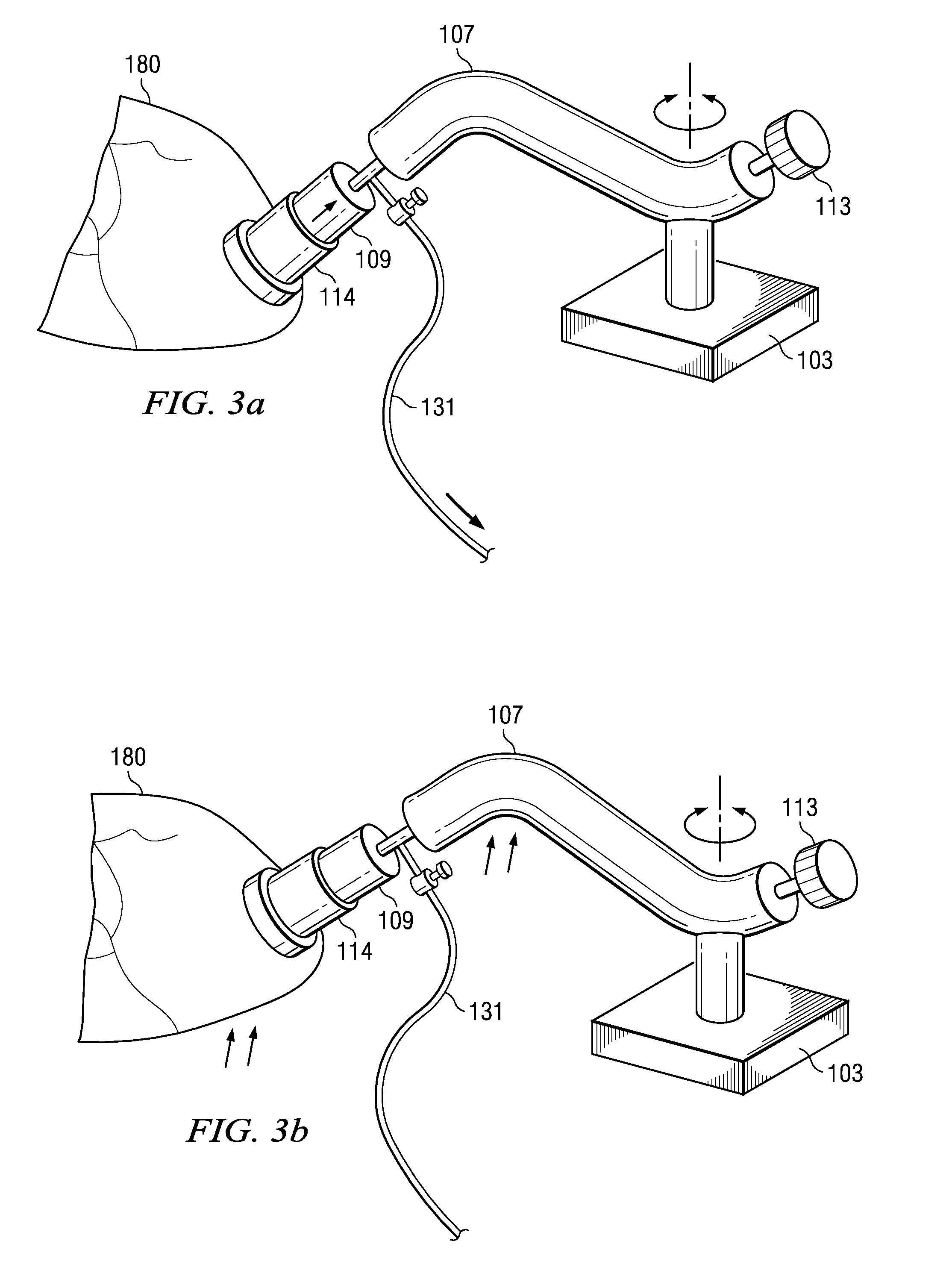Method and apparatus for stabilization and positioning during surgery
a technology for positioning and surgery, applied in the field of surgery, can solve the problems of poor reliability after 18 months or so, 3.4 million people, patients and doctors without choice, etc., and achieve the effect of stabilizing the target area
- Summary
- Abstract
- Description
- Claims
- Application Information
AI Technical Summary
Benefits of technology
Problems solved by technology
Method used
Image
Examples
Embodiment Construction
[0036]Novel surgical tools for off-pump surgery are described below. As defined herein, off-pump surgery refers to any surgical procedure performed without the assistance of a heart-lung machine i.e. cardiopulmonary bypass. However, the disclosed surgical tools and methods may also be used for surgeries that utilize cardiopulmonary bypass.
Surgical Device for Positioning and Stabilizing an Organ
[0037]FIG. 1 illustrates an embodiment of a surgical device for positioning and stabilizing an organ. In an embodiment, the apparatus comprises an arm 107, a base 103, and a suction element 109. The arm 107 has a distal end 102 and a proximal end 104. Arm 107 is coupled to a stabilizing base 103 to secure the arm 107. Arm 107 may be rotatable about the base 103 to provide further positioning for the surgeon. Stabilizing base 103 preferably comprises a clamp or fastener to secure apparatus to a surgical retractor or some other solid support. Distal end 102 of arm 107 is coupled to a suction ele...
PUM
 Login to View More
Login to View More Abstract
Description
Claims
Application Information
 Login to View More
Login to View More - R&D
- Intellectual Property
- Life Sciences
- Materials
- Tech Scout
- Unparalleled Data Quality
- Higher Quality Content
- 60% Fewer Hallucinations
Browse by: Latest US Patents, China's latest patents, Technical Efficacy Thesaurus, Application Domain, Technology Topic, Popular Technical Reports.
© 2025 PatSnap. All rights reserved.Legal|Privacy policy|Modern Slavery Act Transparency Statement|Sitemap|About US| Contact US: help@patsnap.com



